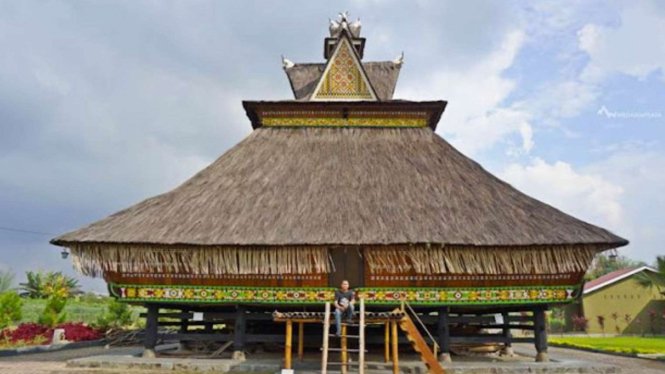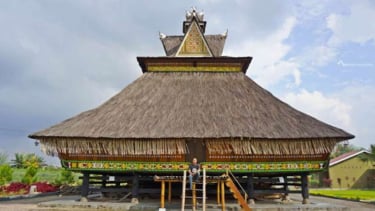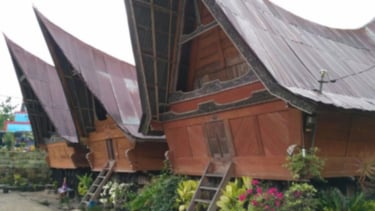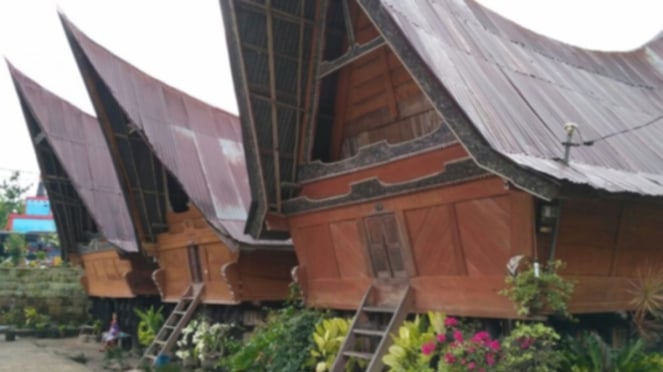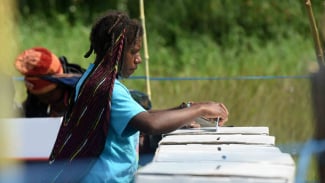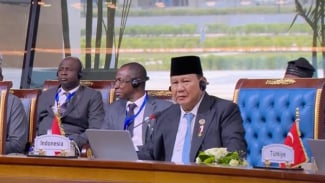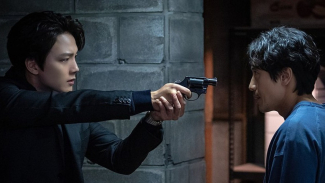Six Iconic North Sumatra Traditional Houses, Fun to Explore
- Istimewa
VIVA – North Sumatra has several iconic traditional houses to explore. In fact, the Batak tribe that inhabits the area of ??North Sumatra has a variety of tribes, including the Batak Toba Tribe, Mandailing, Pakpak, Karo, Simalungun, and also Angkola Tribe.
Each of these tribes has its cultural variety that distinguishes one tribe from another. The difference can be seen in the traditional house owned by each tribe. These traditional houses were built according to the function, and local geographical conditions. Traditional houses in North Sumatra also have their philosophies.
Well, here are some traditional houses in North Sumatra, from various sources.
1. Karo Traditional House
Rumah Adat Karo
- Istimewa
The most well-known traditional house of North Sumatra is the Karo traditional house. This Karo traditional house is the tallest and largest traditional house in North Sumatra, with a height of up to 12 meters.
Interestingly, despite being the largest and tallest traditional house in North Sumatra, this Karo traditional house was built without using nails. Sixteen pillars are leaning against large stones that support this building so that it stands strong. Uniquely, the roof is made of black fibers tied in a woven bamboo frame.
As for the floor, it is made of wood which is arranged and arranged neatly so that it sticks to one another. This Karo traditional house has another name, namely the Siwaluh Jabu traditional house which means that this traditional house is inhabited by eight families who have different roles in the household.
2. Nias Traditional House
Museum Puasaka Nias
- museumku.wordpress.com
Nias traditional houses are divided into two types, namely Omo Hada and Omo Sebua. The Omo Hada traditional house is a Nias traditional house used for ordinary Nias people. As for the Omo Sebua traditional house, it is intended for high-ranking officials to nobles.
In terms of shape, the two buildings are not much different. However, from the size, it is very clear that it looks different. The Omo Sebua traditional house has a type of house on stilts with a height under the stage reaching 2-5 meters. As for Omo Hada, the stage under the stage only reaches 1-2 meters.
This traditional house is made of nibung wood which is used as a support and a roof made of thatch for the Omo Hada traditional house while Omo Sebua uses a clay roof. Its uniqueness is that its solid foundation makes it shock resistant.
3. Bolon Traditional House
Rumah adat Bolon Batak di Pulau Samosir
- Viva.co.id/Anisa Widiarini
This Bolon traditional house has a unique appearance because of its roof shape which is similar to a horse's saddle with a very sharp tip. This traditional house is a house on stilts whose part under the stage reaches 1.7 meters from the ground.
The interior of this North Sumatran traditional house has no partitions and is left alone. This one house is made of wooden planks whose roof is made of palm fiber or thatch leaves. Similar to the Nias traditional house, this house does not use nails but uses ropes to unite the materials of the house to make it resistant to shocks.
4. Bagas Godang Traditional House
Desa Sibanggor Julu di Mandailing Natal, Sumatra Utara.
- U-Report
The Bagas Godang Traditional House or commonly referred to as the Mandailing Traditional House because it comes from the Mandailing Batak Tribe.
This North Sumatra traditional house was originally a place to stay or just rest. However, now, it has become a cultural heritage and can be used by the community for deliberations or community meetings.
The Bagas Godang traditional house has a characteristic rectangular shape to the back with a triangular roof. The top of the roof looks like a scissor shape. This part of the roof was then dubbed the form of tarup silengkung dolok or the shape of the Pedati roof.
5. Pakpak Traditional House
Rumah Adat Pakpak
- Tangkapan Layar: YouTube
The Pakpak Traditional House has the brightest look because it is dominated by red and orange colors on the roof and walls. However, there are also Pakpak traditional houses that still wear black and brown on the roof and then white on the walls.
This traditional house a function as a place to hold deliberation and reach a solution to the problem. The uniqueness of this house lies in the roof which looks like a buffalo horn. The philosophy is that the roof of the house symbolizes a heroic spirit.
6. Simalungun Traditional House
Hotel Khas Parapat, Kabupaten Simalungun
- VIVA/B.S. Putra
The Simalangun Traditional House has a large size and shape. The hallmark of this Simalungun traditional house is its pyramid-shaped building with the type of house on stilts.
The section under the stage is made as high as two meters to avoid attacks by wild boars and other wild animals. In this Simalungun traditional house, there are wooden supports that are carved in color. While the door is deliberately short. So, the guests can respect the owner of house for bowing a little.
This Simalungun traditional house was originally built by King Simalungun around 1939. Currently, North Sumatra traditional houses are found in Pematangsiantar and Simalungun cities.
